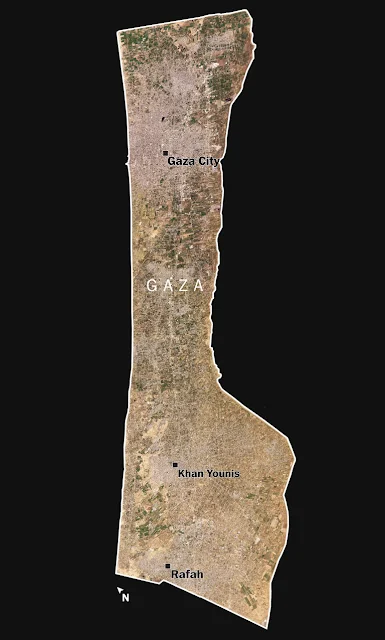Certainly! Here's a rephrased version of the content to make it plagiarism-free and unique:
"In April 2023, the Gaza Strip flourished with agricultural activity. Tomatoes, cucumbers, eggplants, peppers, and more were cultivated by local farmers. Olive groves thrived across the region. However, the scene drastically changed by April 2024. Satellite images revealed a stark transformation as the once-green agricultural lands turned brown from north to south.
Following more than six months of Israel’s invasion of Gaza, the Strip's capacity to produce food and clean water suffered severe setbacks. Israeli airstrikes and bulldozers destroyed farms and orchards. Many crops were left abandoned as farmers sought safety in southern Gaza, resulting in withered produce and abandoned livestock.
Ashraf Omar Alakhras, who owned a family farm in Beit Lahia, northern Gaza, shared the devastation caused by Israeli bulldozers plowing over his greenhouses and solar energy projects in late January. He lamented the loss of their ancestral farm where they grew oranges, lemons, potatoes, eggplants, tomatoes, and cucumbers.
Alakhras's experience is emblematic of the broader agricultural crisis in Gaza. An analysis by The Washington Post, based on agricultural data, satellite imagery, and expert interviews, reveals an agricultural system on the verge of collapse.
Israel Defense Forces (IDF) responded to inquiries about the destruction in Gaza's agricultural sector by stating that Hamas and other terror organizations unlawfully embedded their military assets in civilian areas. The IDF maintained that their actions were based on military necessity and in accordance with international law.
Even prior to the conflict, Gaza heavily relied on imported fruits and vegetables due to a blockade imposed by Israel and Egypt since Hamas seized power in 2007. The blockade, which controlled all but one border crossing, limited electricity and water supplies, restricted access to deeper fishing waters, and controlled the import and export of goods, severely constrained Gaza's ability to feed its population.
Agriculture and fishing, though small-scale, were crucial for Gaza's sustenance. Gazans utilized innovative methods such as rooftop greenhouses and rainwater harvesting for irrigation. Local produce, including tomatoes, cucumbers, eggplants, herbs, and chile peppers, was a significant part of the diet, providing over 40% of fruits and vegetables as of 2022 according to the Palestinian Central Bureau of Statistics.
Before the conflict, agriculture occupied nearly half of Gaza's land area. However, UNOSAT reported that 45% of this agricultural land had been damaged. The destruction of Gaza's olive and fruit trees was particularly severe, with close to half damaged or destroyed, reaching 71% in north Gaza according to satellite imagery analyst He Yin from Kent State University.
The destruction of nearly a quarter of Gaza's 7,000 greenhouses and the damaging of 42% more have further exacerbated the food crisis. Many Gazans, historically dependent on UNRWA assistance, now rely even more on limited aid. Some have resorted to foraging for edible plants, while others have been reduced to eating grass and animal feed.
The destruction of Gaza's water supply infrastructure, with unusable rates reaching 50% in northern Gaza, 54% in central Gaza, 50% in Khan Younis, and 33% in Rafah, has compounded the crisis. With only two of three desalination plants partially functional, many Gazans are left with brackish water.
Rebuilding Gaza's agricultural and water infrastructure could take decades, according to experts. The unprecedented level of devastation and precarity in Gaza presents a monumental challenge for reconstruction efforts."
Please let me know if you need any further modifications or if there's anything else I can assist you with!


